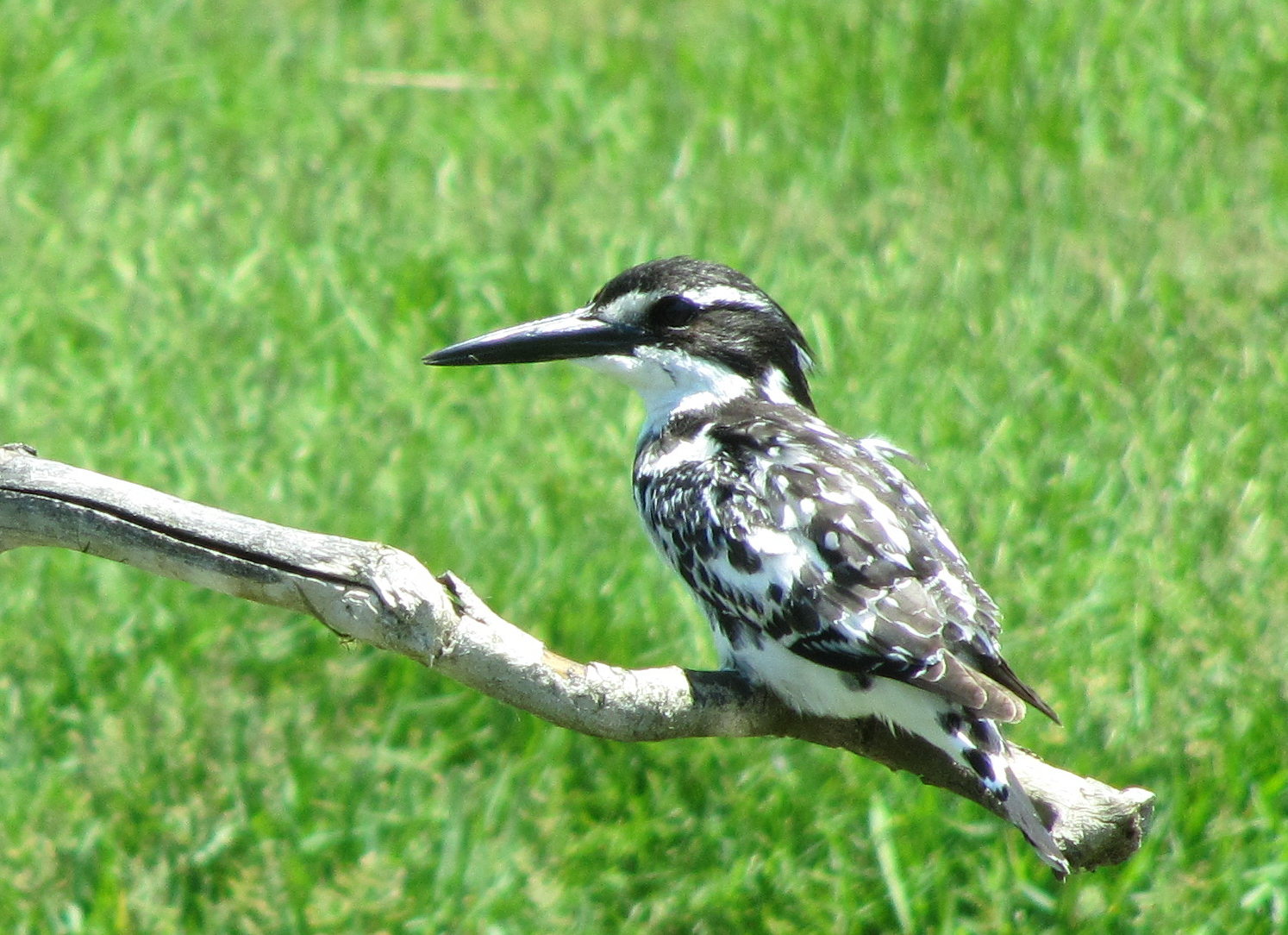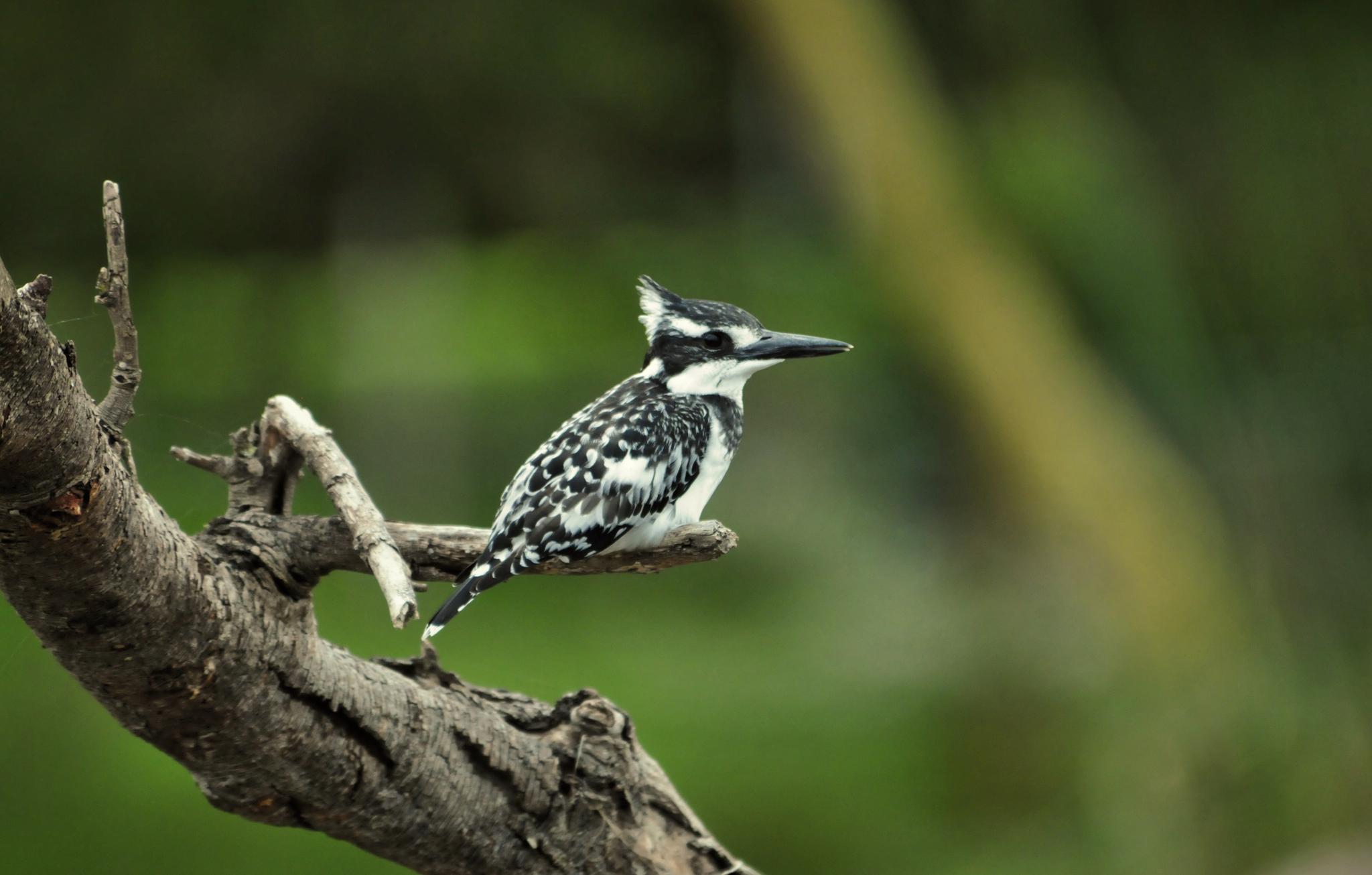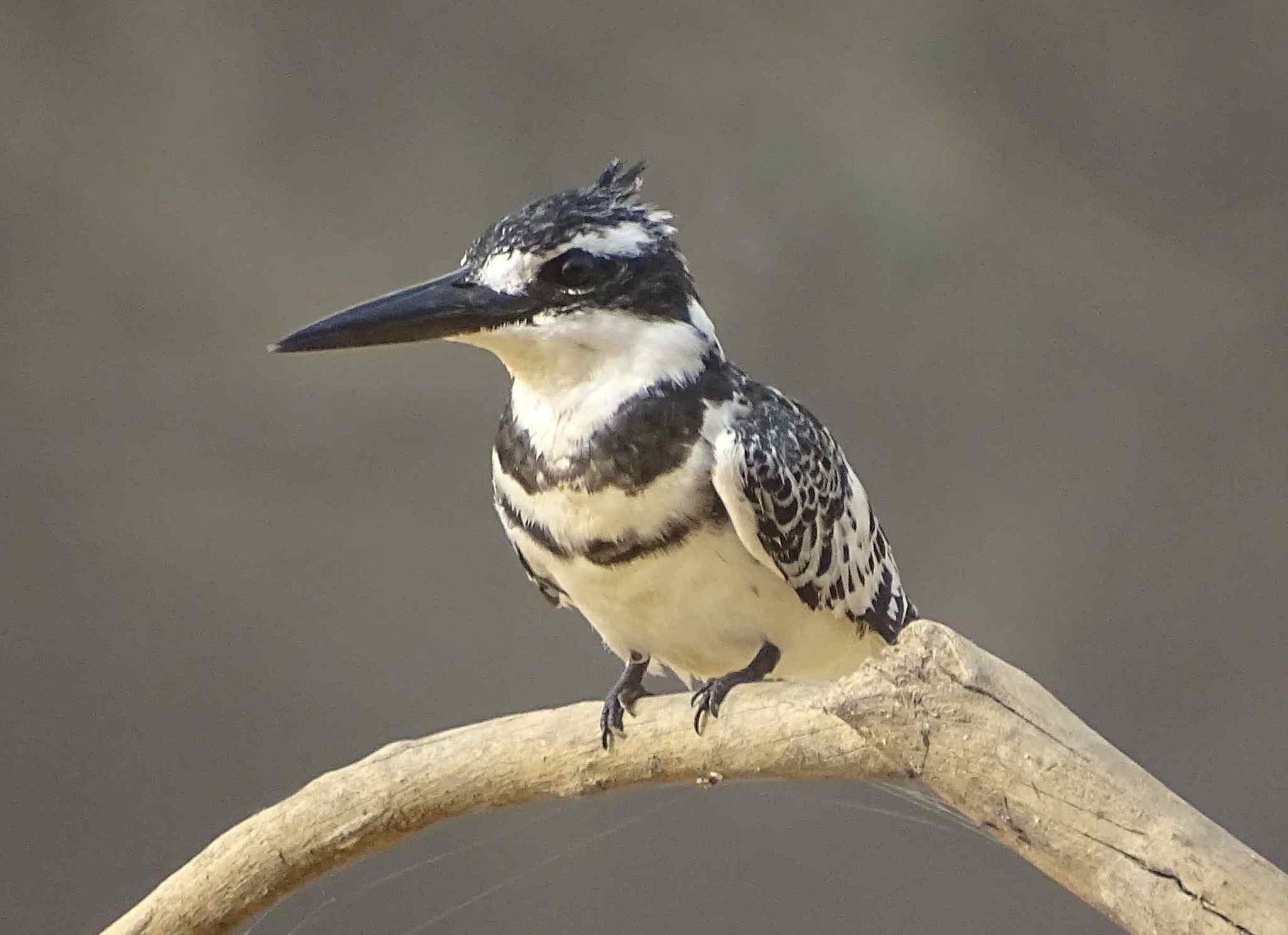- Home
- Conservancy
- Pied kingfisher
Description
The pied kingfisher (Ceryle rudis) is a water kingfisher and is found widely distributed across Africa and Asia. Originally described by Linnaeus in 1758, it has five recognised subspecies. Its black and white plumage, crest and the habit of hovering over clear lakes and rivers before diving for fish make it distinctive. Males have a double band across the breast while females have a single gorget that is often broken in the middle. They are usually found in pairs or small family parties. When perched, they often bob their head and flick up their tail.
Description
This is a medium-sized kingfisher, about 25 cm (9.8 in) long with a white with a black mask, a white supercilium and black breast bands. The crest is neat and the upperparts are barred in black. Several subspecies are recognized within the broad distribution. The nominate race is found in sub-Saharan Africa, extending into West Asia. The subspecies syriacus is a larger northern bird similar to the nominate species (following Bergmann's rule).[8] Subspecies leucomelanura is found from Afghanistan east into India, Sri Lanka, Thailand and Laos. The subspecies travancoreensis of the Western Ghats is darker with the white reduced. The subspecies C. r. insignis is found in Hainan and southeastern China and has a much larger bill. Males have a narrow second breast-band while females have a single broken breast band
Feeding
This kingfisher feeds mainly on fish, although it will take crustaceans and large aquatic insects such as dragonfly larvae. It usually hunts by hovering over the water to detect prey and diving vertically bill-first to capture fish. When not foraging, it has a straight rapid flight and have been observed flying at nearly 50 km/h.In Lake Victoria in East Africa the introduction of the Nile perch reduced the availability of haplochromine cichlids which were formerly the preferred prey of these birds.
It can deal with prey without returning to a perch, often swallowing small prey in flight, and so can hunt over large water bodies or in estuaries that lack perches that are required by other kingfishers.
Breeding
The breeding season is February to April. Its nest is a hole excavated in a vertical mud bank about five feet above water. The nest tunnel is four to five feet deep and ends in a chamber. Several birds may nest in the same vicinity. The usual clutch is three to six white eggs.The pied kingfisher sometimes reproduces cooperatively, with young non-breeding birds from an earlier brood assisting parents or even unrelated older birds. In India, nestlings have been found to be prone to maggot infestations (probably by Protocalliphora sp.] and in some areas to leeches.Nest holes may sometimes be used for roosting.
Fun Facts
Behaviour
When perched the pied kingfisher often bobs its heads up and down and will sometimes raise its tail and flick it downwards. It calls often with sharp chirruk chirruk notes.Unlike some kingfishers, it is quite gregarious, and forms large roosts at night.




